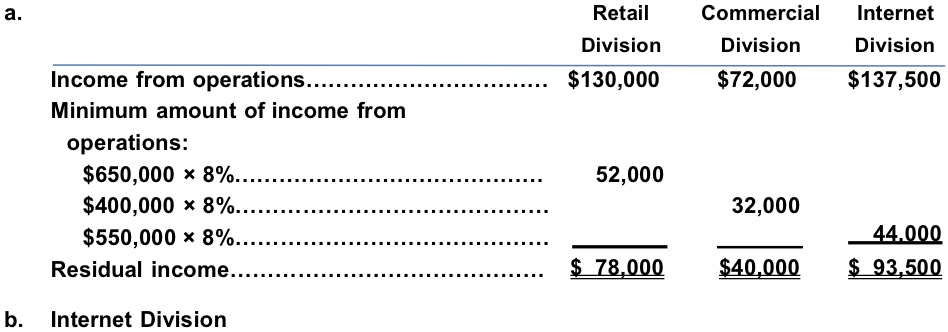


Residual Income is used to evaluate the efficiency of the manufacturing process, and it helps managers to identify areas that need improvement. Residual Income is essential in the manufacturing industry as it helps investors and managers to determine the profitability of an investment or a company. The Importance of Residual Income in the Manufacturing Industry - Residual Income It is a measure of the return on investment that is more than the required rate of return. Residual Income is the income generated by an asset or a company after deducting the cost of capital. Residual Income is a financial metric used to evaluate the profitability of an investment or a company. Residual Income - Return on Investment and Residual Income in Manufacturing ROI does not consider the impact of inflation on investment returns. ROI does not consider the risk associated with an investment. ROI does not consider the time value of money. ROI can be used to evaluate a company's performance over a specific period.ĭisadvantages - Using ROI as a Performance Metric ROI can be used to compare different investment opportunities. ROI provides a clear picture of the efficiency of an investment or a manufacturing process. Advantages and Disadvantages of using ROI as a Performance Metric - Return on Investment (ROI)Īdvantages - Using ROI as a Performance Metric In this case, the company achieved an ROI of 30% on its investment in new machinery. Using the formula above, we can calculate the ROI as follows: Suppose a manufacturing company invested $1,000,000 in new machinery the net income generated in the first year was $300,000. Total Investment = Total Assets - Total LiabilitiesĮxample of Calculating ROI in the Manufacturing Industry:

Net Income = Total Revenue - Total Expenses ROI = (Net Income/Total Investment) x 100 Formula for Calculating ROI - Return on Investment (ROI) For managers, ROI is used to assess the manufacturing process's efficiency and identify improvement areas. ROI is used to evaluate the profitability of manufacturing investments, allowing investors to determine whether to invest or divest. ROI is essential in the manufacturing industry as it helps investors and managers to make informed decisions. The Importance of ROI in the Manufacturing Industry - Return on Investment (ROI) ROI is used to evaluate the performance of a company's investment over a specific period, and it can be used to compare different investment opportunities. It is expressed as a percentage and critical metric for any manufacturing company. ROI measures the ratio of net income to the total investment made. ROI is a financial metric used to evaluate the efficiency of an investment or a company in generating profits. Return on Investment (ROI) - Return on Investment and Residual Income in Manufacturing This article will discuss ROI and residual income, their importance in the manufacturing industry, and how they can be applied to measure manufacturing performance. However, by using ROI and residual income, it is possible to determine how well a company is performing. The manufacturing industry is known for its complexity, and measuring its performance can be challenging. ROI and residual income are used to determine the efficiency of an organization in generating profits, and they are key performance indicators for any company. Return on Investment (ROI) and Residual Income are essential metrics used to measure and evaluate a company's performance in the manufacturing industry.


 0 kommentar(er)
0 kommentar(er)
